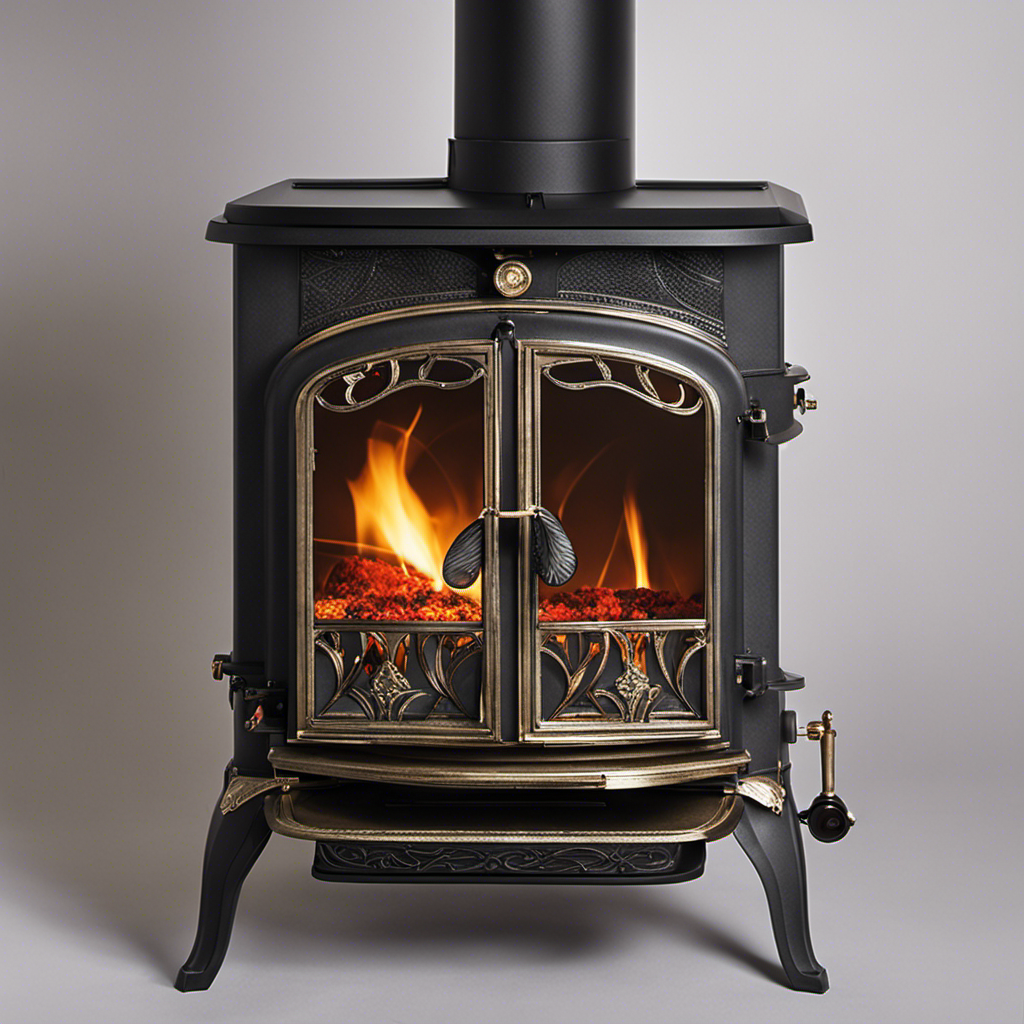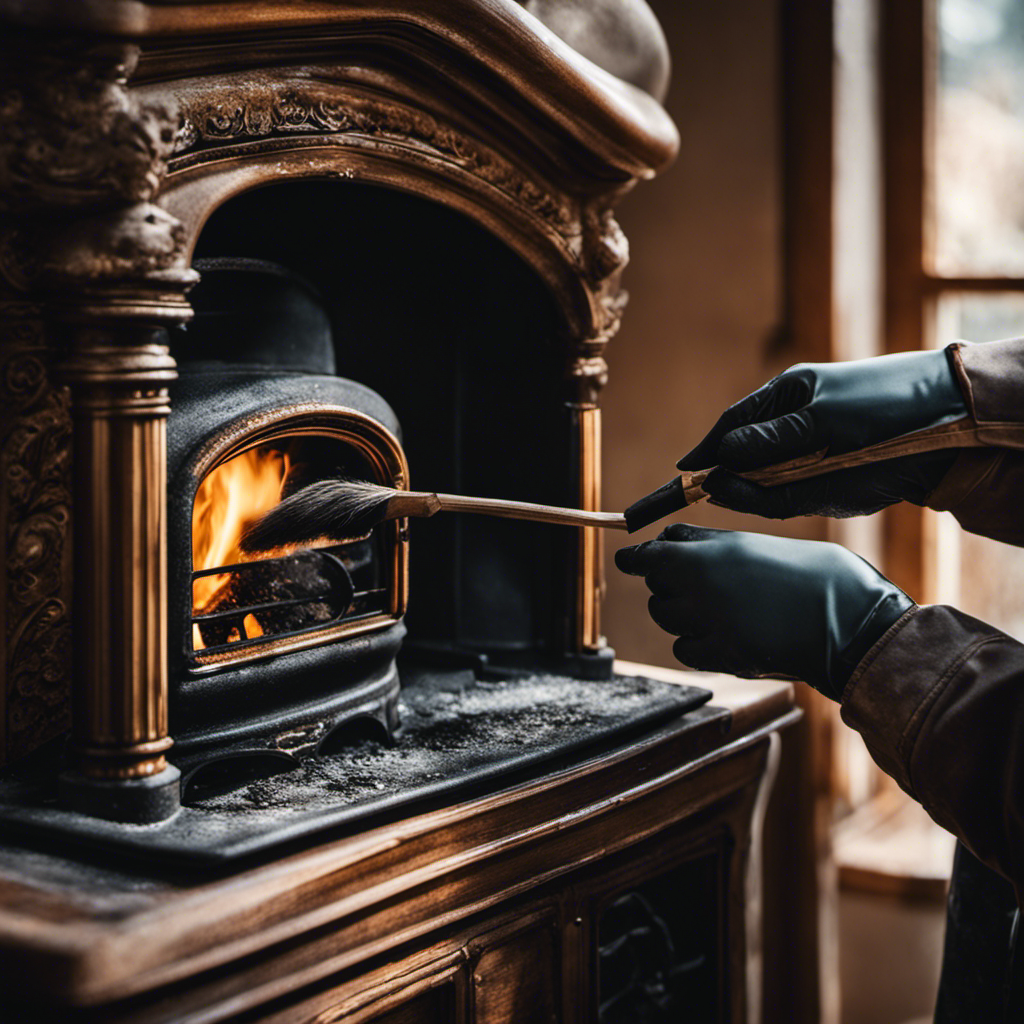So, you’ve noticed that your beloved wood-burning stove seems somewhat exhausted and frayed. Worry not, my friend, because I have the ideal solution for you.
In this article, I’m going to show you exactly how to give the outside of your wood stove a good cleaning. From gathering the necessary supplies to tackling stubborn soot stains, I’ll guide you through each step with expert advice and helpful tips.
Get ready to make your wood stove shine like new again!
Key Takeaways
- Gather the necessary cleaning supplies, including a bucket, scrub brush, and soapy water or a non-abrasive cleaner designed for stoves.
- Inspect the wood stove’s condition and identify areas that require special attention before starting the cleaning process.
- Use mild cleaning solutions like dish soap mixed with warm water, vinegar diluted with water, or homemade solutions like vinegar and baking soda paste or lemon juice for stubborn stains.
- Finish by applying a high-quality wood stove paint or polish to protect the surface and regularly maintain the stove to ensure efficient performance.
Gathering the Necessary Supplies
I’ll need to grab a bucket, scrub brush, and some soapy water to clean the outside of the wood stove. When it comes to cleaning techniques for the outside of a wood stove, it’s important to choose the right cleaning products. This will help ensure that the surface is effectively cleaned without causing any damage.
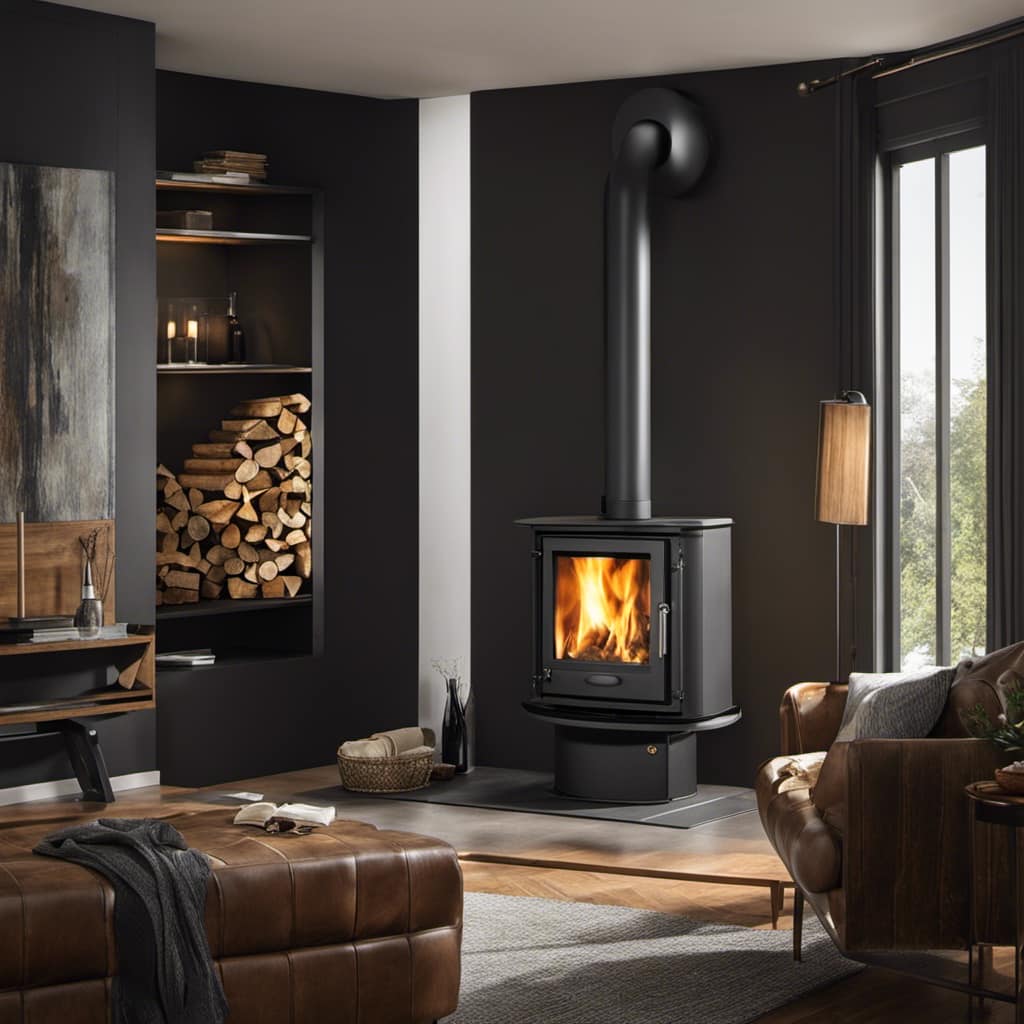
For routine cleaning, mild dish soap mixed with warm water is usually sufficient. However, if there are stubborn stains or grease buildup, a stronger cleaning solution may be needed. In such cases, a non-abrasive cleaner specifically designed for use on stoves can be used. It’s important to read the instructions on the cleaning product to ensure it’s suitable for the stove’s material.
With the cleaning supplies gathered, I can now move on to preparing the wood stove for cleaning by removing any loose debris or ashes.
Preparing the Wood Stove for Cleaning
Before starting, make sure to gather all the necessary cleaning supplies.
To prepare the wood stove for cleaning, there are a few pre-cleaning steps that need to be taken.
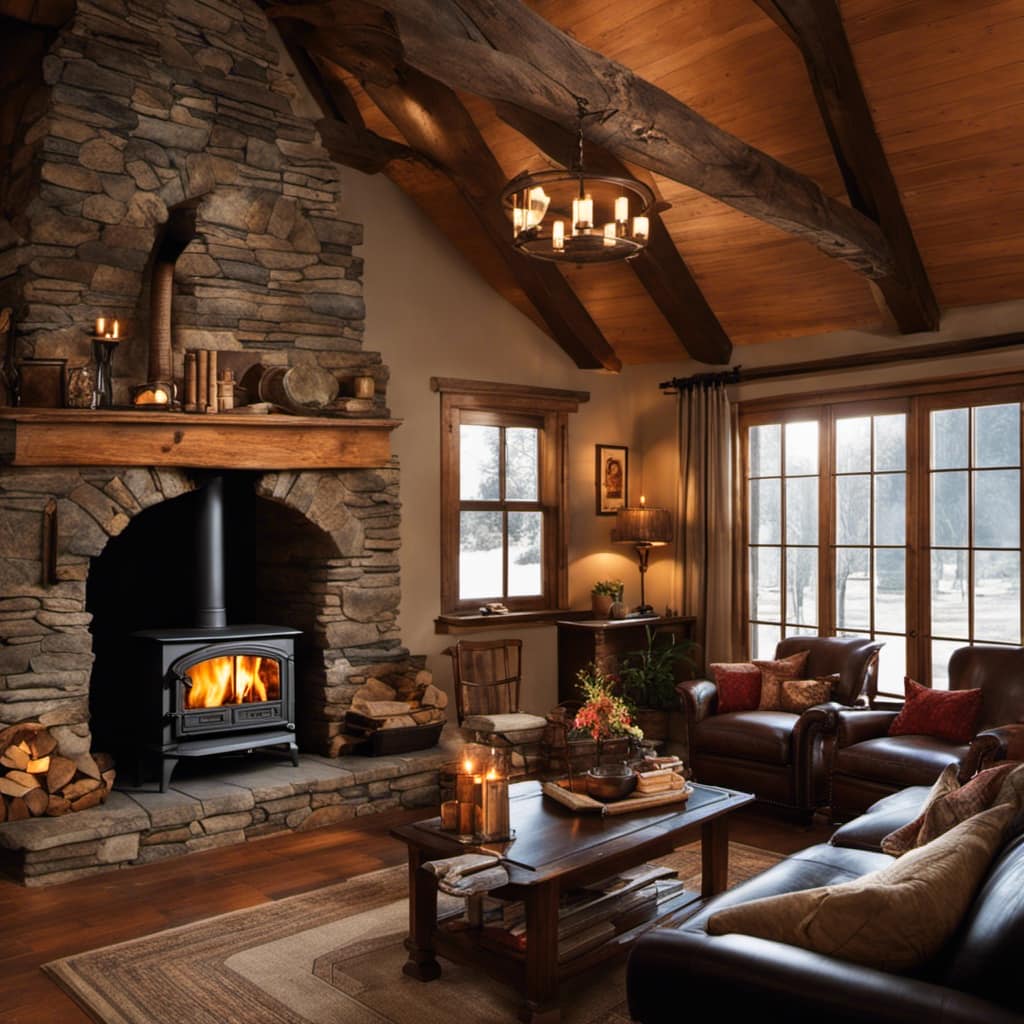
First, inspect the stove’s condition to identify any areas that require special attention. Look for signs of rust, chipped or peeling paint, or any other damage that may need to be addressed.
Next, remove any loose debris or ashes from the exterior of the stove using a brush or vacuum cleaner.
Finally, protect the surrounding area by placing a drop cloth or newspaper underneath the stove to catch any dirt or debris that may fall during the cleaning process.
By following these pre-cleaning steps, you can ensure a thorough and effective cleaning of your wood stove.

Now, let’s move on to the next step of removing dirt and grime from the exterior.
Removing Dirt and Grime From the Exterior
To start, I’ll gather a cloth and some mild cleaning solution to remove the dirt and grime from the exterior.
Cleaning the outside of a wood stove requires specific techniques and recommended cleaning products to ensure an effective and safe process.
When it comes to cleaning techniques, it’s important to avoid abrasive materials that can damage the surface of the wood stove. Instead, opt for a soft cloth or sponge that won’t scratch the exterior.
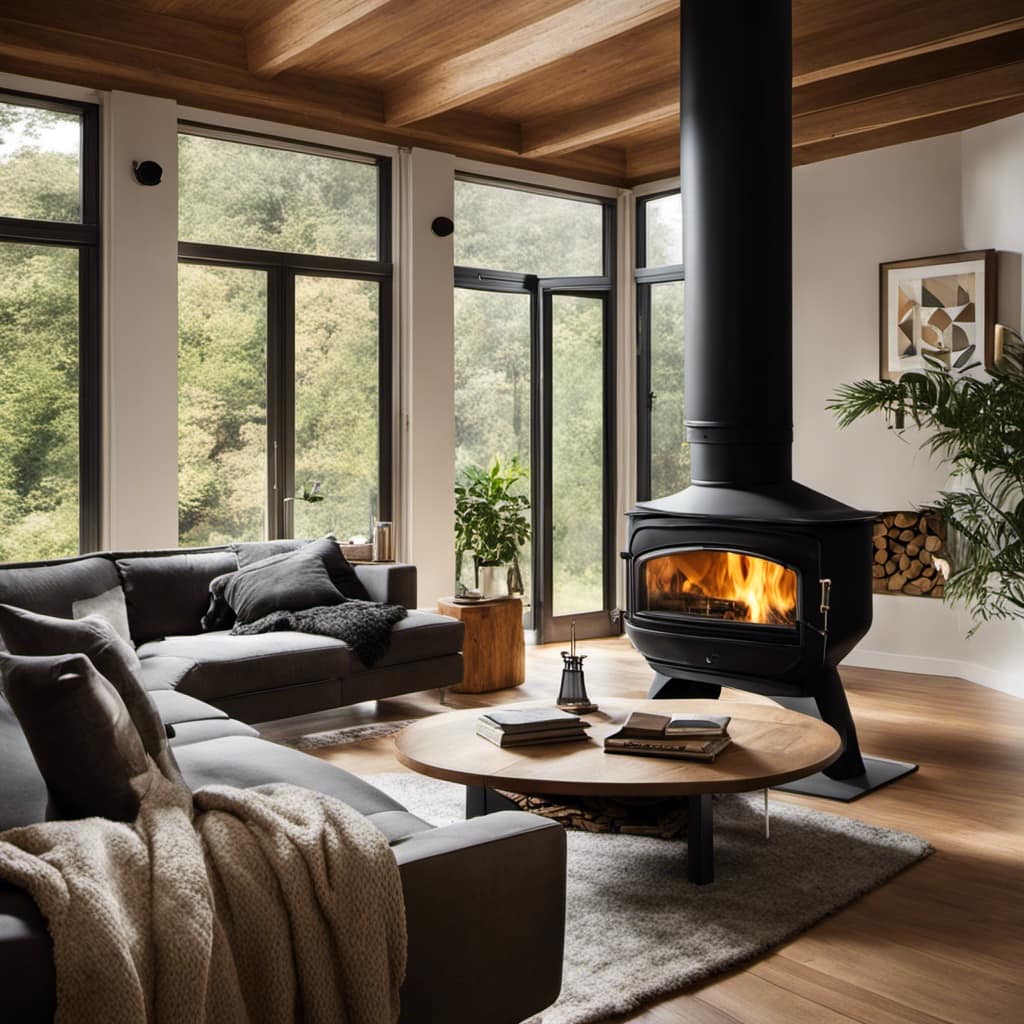
As for cleaning products, mild solutions such as dish soap mixed with warm water or vinegar diluted with water are recommended. These solutions are gentle yet effective at cutting through dirt and grime without causing any harm to the wood stove.
Remember to always test the cleaning solution on a small, inconspicuous area first to ensure compatibility.
Dealing With Stubborn Soot Stains
Dealing with stubborn soot stains can be challenging, but there are effective methods to remove them from the exterior of my wood stove. Here are three cleaning techniques that I recommend:
Vinegar and Baking Soda: Create a paste using equal parts vinegar and baking soda. Apply the paste to the soot stains and let it sit for 15-20 minutes. Scrub the area with a brush or sponge, then rinse with water.

Lemon Juice: Squeeze fresh lemon juice onto the soot stains and let it sit for a few minutes. Scrub the area with a brush or sponge, then rinse with water. The acid in the lemon juice helps break down the soot.
Dish Soap and Warm Water: Mix a few drops of dish soap with warm water. Dip a soft cloth or sponge into the soapy water and gently scrub the soot stains. Rinse with clean water.
When using these homemade cleaning solutions, always test them on a small, inconspicuous area of the wood stove first.
Can the Outside of a Wood Stove Get Damaged During the Break-in Process with Soapstone?
Yes, the outside of a wood stove can get damaged during the breaking-in soapstone stove process if not done carefully. It’s important to follow the manufacturer’s instructions to avoid overheating the soapstone, which can cause discoloration or cracking on the exterior. Properly breaking in your soapstone stove will help ensure its longevity and performance.
Finishing Touches and Maintenance Tips
I find it important to regularly inspect and maintain the exterior of my wood stove to ensure its longevity and optimal performance. Following a maintenance schedule is crucial in keeping the wood stove in top condition.
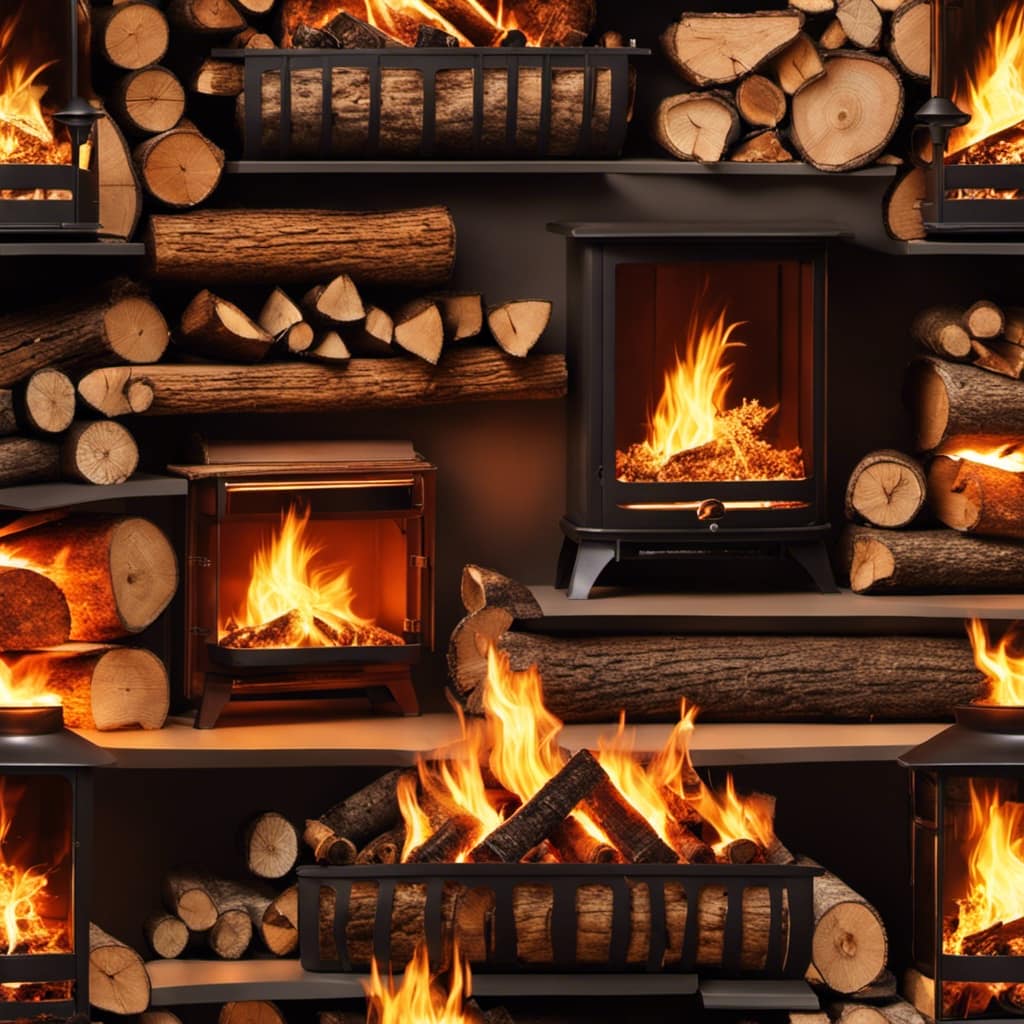
One of the key aspects of maintenance is protecting the wood surface. To do this, I recommend applying a high-quality wood stove paint or polish. This won’t only enhance the stove’s appearance but also provide a protective barrier against scratches, rust, and other damage.
Before applying the paint or polish, it’s essential to clean the surface thoroughly, removing any dirt, grease, or soot. Once the surface is clean, I use a soft cloth or brush to apply the paint or polish, following the manufacturer’s instructions.
Regularly inspecting and maintaining the wood stove’s exterior will help prevent deterioration, extend its lifespan, and ensure efficient performance.
Frequently Asked Questions
How Often Should I Clean the Outside of My Wood Stove?
I clean the outside of my wood stove every few months to keep it looking its best. Waxing is not necessary, but wiping it down with a damp cloth or using a mild soap solution works well too.
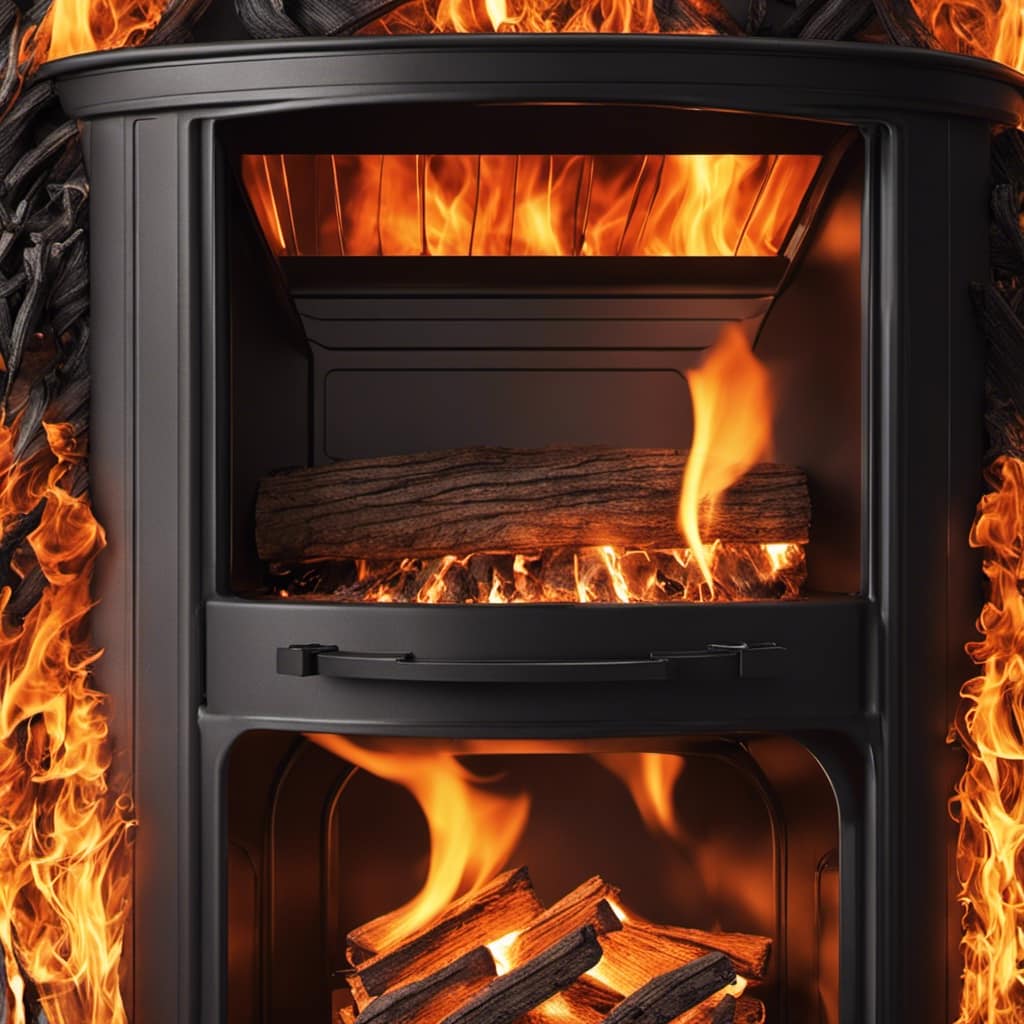
Can I Use Regular Household Cleaning Products to Clean the Exterior of My Wood Stove?
Sure, you can use regular household cleaning products on the exterior of your wood stove, but I recommend trying natural cleaning solutions as they are safer and more environmentally friendly.
Is It Necessary to Remove the Ashes From the Stove Before Cleaning the Outside?
It is not safe to clean the outside of a wood stove while it is still hot. It is necessary to remove the ashes before cleaning. Alternative methods for cleaning the exterior include using a brush and mild detergent.
What Should I Do if There Are Rust Spots on the Exterior of My Wood Stove?
If there are rust spots on the exterior of my wood stove, I would recommend taking preventive measures to avoid further rusting. The best cleaning methods for removing rust spots depend on the type of stove and the severity of the rust.
Are There Any Specific Safety Precautions I Should Take When Cleaning the Outside of a Wood Stove?
What are the necessary safety precautions when cleaning a wood stove? It’s important to use proper protective equipment and choose cleaning products specifically designed for wood stoves to ensure safety and effectiveness.
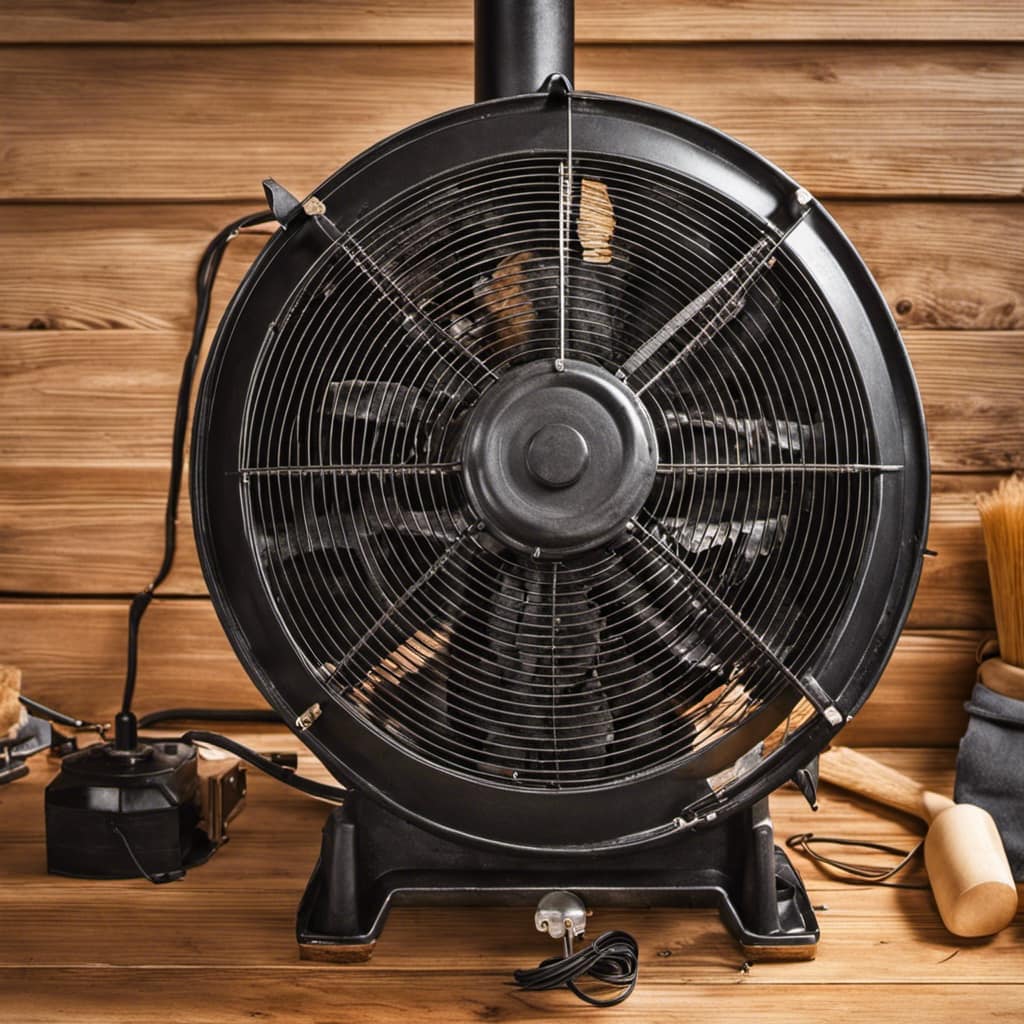
Conclusion
In conclusion, cleaning the outside of a wood stove is a task that requires the right supplies and proper preparation. By following the steps outlined in this article, you can effectively remove dirt, grime, and stubborn soot stains from your stove’s exterior.
Remember to take care of your wood stove regularly to maintain its functionality and aesthetic appeal. With these detailed tips, you can ensure that your wood stove remains clean and looking great for years to come.
Growing up surrounded by the vast beauty of nature, Sierra was always drawn to the call of the wild. While others sought the comfort of the familiar, she ventured out, embracing the unpredictable and finding stories in the heartbeat of nature.
At the epicenter of every remarkable venture lies a dynamic team—a fusion of diverse talents, visions, and passions. The essence of Best Small Wood Stoves is crafted and refined by such a trio: Sierra, Logan, and Terra. Their collective expertise has transformed the platform into a leading authority on small wood stoves, radiating warmth and knowledge in equal measure.


